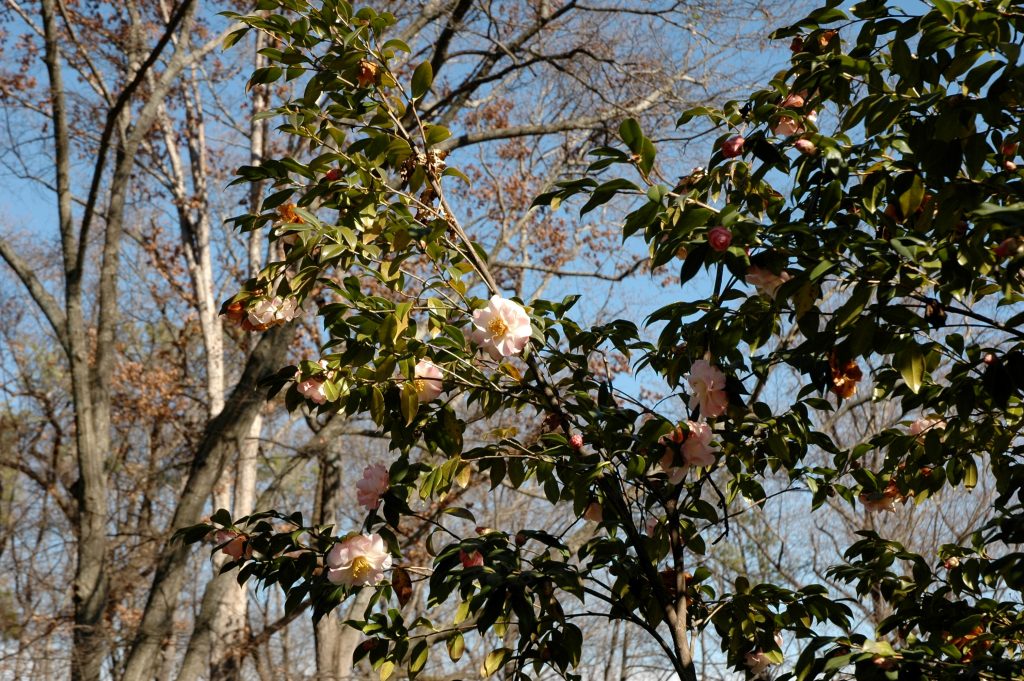
By: Melinda Myers
Prepare your evergreens now before winter weather takes its toll on your boxwood, camellias, and rhododendrons. Winter wind, sun, frozen soil, snow, and ice can wreak havoc on our plants, especially evergreens.
Water plants, especially evergreens and new plantings thoroughly before the first hard freeze in preparation for drier winter conditions. Evergreens continue to lose moisture throughout the winter even when the landscape appears dormant. Keep the hose handy and water thoroughly when the soil is dry. Winter watering as needed prevents yellow and brown needles and leaves on evergreens.
Apply a layer of mulch to the soil under and around trees and shrubs or freshen existing mulch. A two- to three-inch layer of woodchips or shredded bark insulates roots from temperature extremes, conserves moisture, suppresses weeds during the growing season and improves the soil as it breaks down in the future. Keep mulch several inches away from the trunk of trees and stems of shrubs.
Shelter evergreens from winter winds and sun that increase moisture lost through evergreen needles and leaves. Broadleaf evergreens like rhododendrons and boxwoods are most susceptible and benefit from protection when planted in exposed locations.
Create an attractive winter shelter with one of the commercially available winterizing products or build your own. Use a bit of decorative fencing or recycle a locally grown Christmas tree to cast a bit of shade and block the wind. Christmas tree windbreaks also add greenery to the winter landscape and shelter for visiting birds.
Be prepared to cover tender plants when extremely cold temperatures are in the forecast. Floating row covers allow light and water through while protecting the plants from freezing temperatures. These can be left in place for as long as the threat of cold is in the forecast. Or cover tender plants with old sheets or blankets before damaging temperatures arrive and remove them whenever temperatures have warmed.
As the seasons’ change, animal habits can also change. Install fencing, apply repellents or enlist scare tactics to reduce the risk of damage from hungry animals. Applying for wildlife protection before critters start feeding increases your chance of success. Monitor plantings for damage, adjust as needed and consider using a combination of animal protections.
Delay major pruning until the worst of winter weather has passed. The inner needles and leaves of evergreens have been sheltered by the outer layer of growth. Removing the outermost growth in fall exposes the tender inner growth to the drying winter sun and wind, increasing the risk of winter damage.
A few hours spent preparing evergreens for winter now can save you hours repairing damage next spring and money spent on replacement plants.
Melinda Myers has written more than 20 gardening books, including Small Space Gardening. She hosts The Great Courses How to Grow Anything DVD series and the nationally syndicated Melinda’s Garden Moment TV and radio segments. Myers’ website, www.MelindaMyers.com, features gardening videos, podcasts, audio tips, and monthly gardening checklists.








